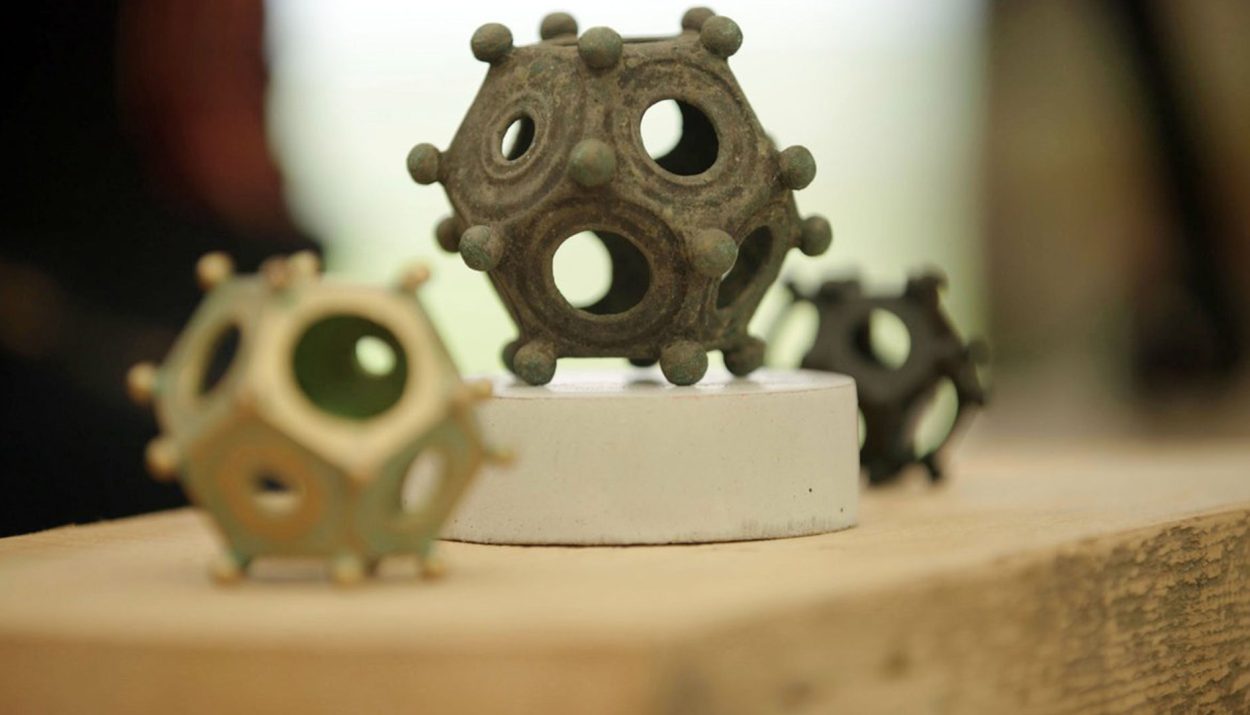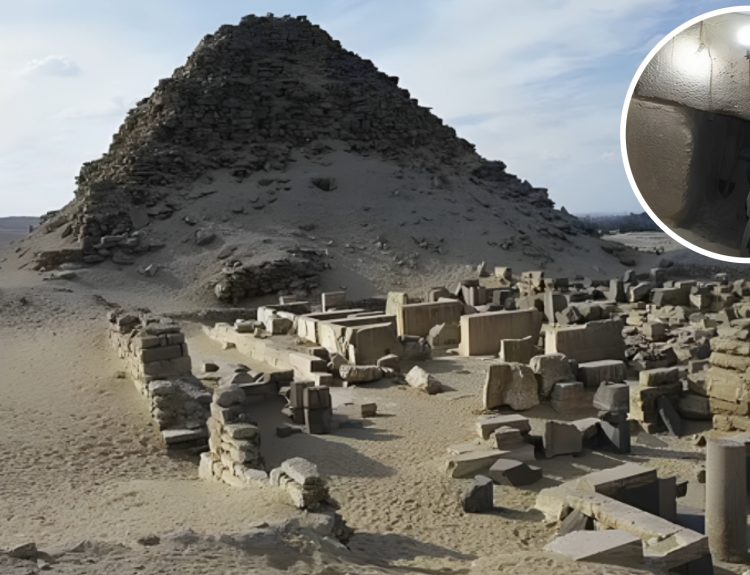A group of amateur archaeologists made an incredible discovery last summer in the English village of Lincolnshire. It was very old – dating back to Roman times – and made of a copper alloy. But what it is remains a mystery.
The artifact is a dodecahedron, a twelve-sided metal cage. It is not necessarily a rare object – more than a hundred dodecahedrons have been unearthed around Europe – but it remains one of the most baffling. Here’s what we know – and don’t know – about the mysterious Roman dodecahedrons.
What Does “Dodecahedron” Mean?
Before we talk about the ancient Roman object of the same name, let’s find out what “dodecahedron” means. Dodecahedron is a three-dimensional geometric shape along the same lines as a hexagon or pentagon. Only a dodecahedron has twelve sides. Each of these sides is flat and in the shape of a five-sided pentagon.
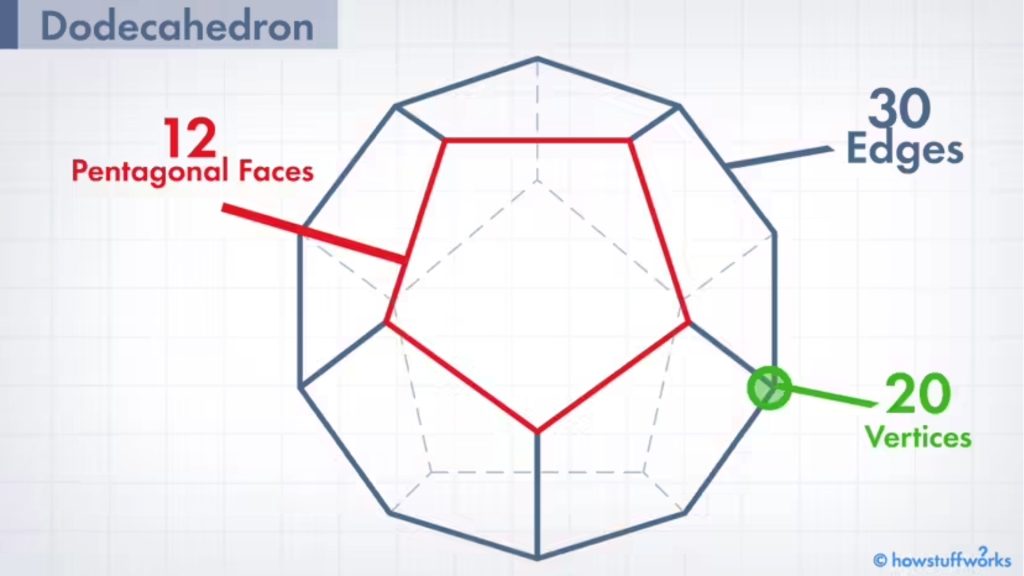
The name “dodecahedron” comes to us from the Greek word for “twelve”, “dodeka,” and the word “hedra” which means “face.” Dodecahedrons are symmetrical. This shape is particularly intriguing for mathematicians, as the number twelve is, as we will see next, significant.
Twelve … An Intriguing Number
Even though our number system is based on the number ten, mathematicians will tell you that the number twelve would have made a great alternative. In fact, the base-12 system, known as the duodecimal system, was in widespread use in the past by cultures around the world.

Twelve is more easily divisible than ten, which is why clocks are based on twelve hours, rather than ten. The number holds cultural significance, too. There are twelve months in the year, twelve disciples of Jesus, twelve signs of the Zodiac, twelve imams in Islam, twelve tribes of Israel, and twelve major Olympian gods in Greek mythology.
Dodecahedrons … A Bizarre Roman Artifact
The Roman dodecahedrons that have been discovered date from the 2nd to the 4th centuries AD. They are made of bronze or copper alloy that has been cast into the twelve-sided shape. Each of the twelve flat sides have round holes in the center, although the sizes of the holes vary in each individual dodecahedron. Weirdly, the holes opposite each other are always of unequal size.
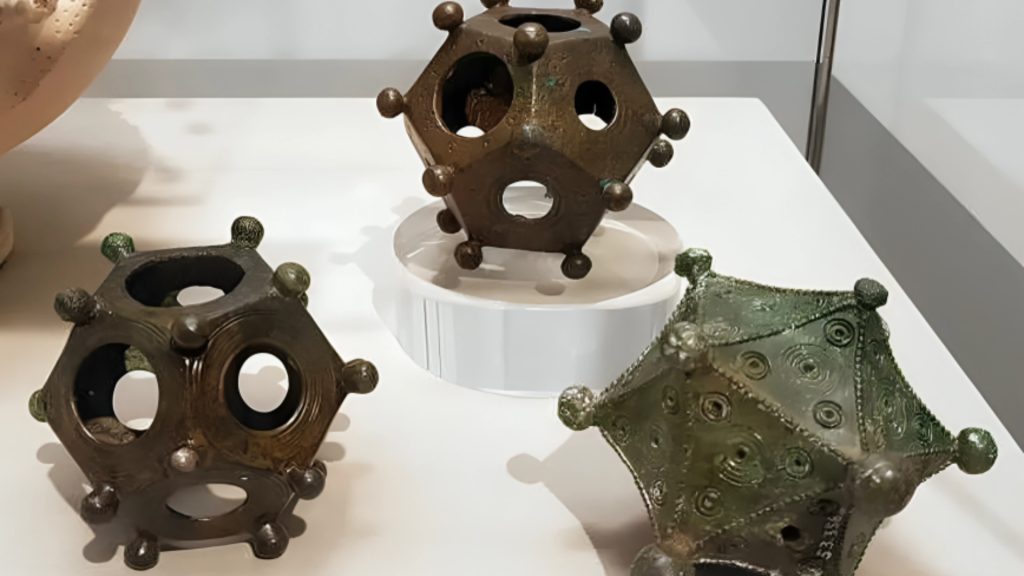
These objects are hollow. In fact, they appear like cages. Some of the objects have small knobs at the corners. None of them have any inspiration or writing on them. The sizes of the Roman dodecahedrons that have been found range from just over one and a half inches to four or five inches. Amazingly, none of the artifacts show signs of use or wear.
A Grapefruit-Sized Artifact
The recently discovered dodecahedron is one of the larger ones ever found. According to Richard Parker, the secretary of the Norton Disney History and Archaeology Group, the artifact is roughly the size of a grapefruit. It was found at a location about 35 miles southeast of Sheffield where the amateur archaeologists had been working for two weeks.

“It was our second-to-last day of the excavation and up pops this dodecahedron in Trench Four,” Parker explained. We weren’t getting many metal signals at that point, but all of a sudden, there it was.”
Adding to England’s Collection
Parker noted that there have been nearly 120 dodecahedrons discovered in Europe and only 32 of them have been found in Great Britain. This new discovery bumps that number up to 33.

This dodecahedron is the only one ever found in the Midlands. Parker added the object is in remarkably good condition and fully intact. There are no signs of damage. “We were completely surprised by it,” said Parker.
Discovering Dodecahedrons
The first known discovery of a dodecahedron took place in Aston, Hertfordshire in 1739, although there may have been earlier finds then went undocumented. These mysterious objects have been found in sites in Germany, France, Belgium, Austria, Luxembourg, Switzerland, the United Kingdom, and the Netherlands.
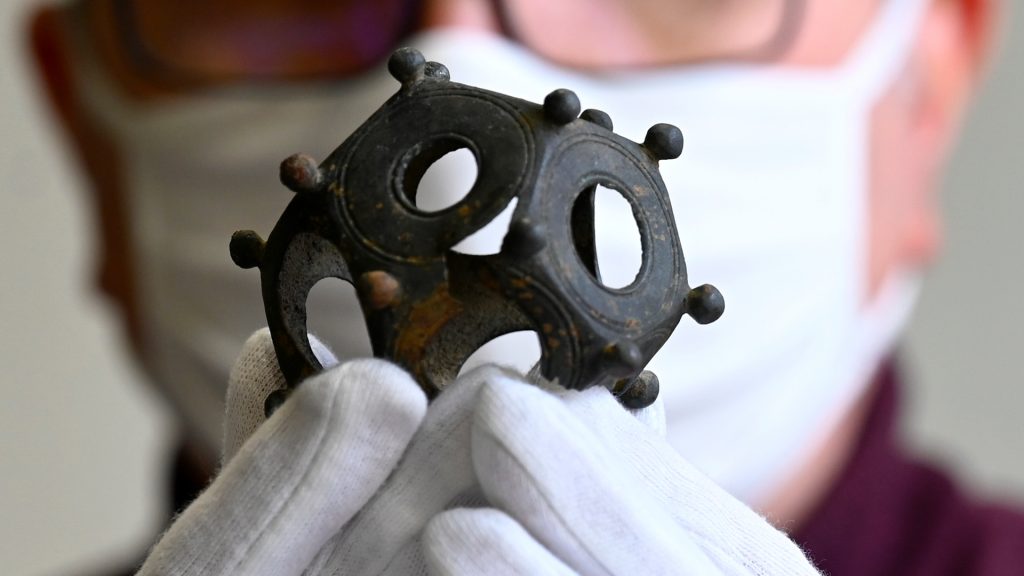
The newest dodecahedron, according to Parker, was located in an area where amateur archaeologists had previously located other metal objects from the Roman occupation, including jewelry and coins. It is believed that the items in this site date back more than 1700 years.
An Object Unknown to Historians
Historians and researchers have been about to definitely determine that the dodecahedrons are Roman in origin. Most of them, like the one recently discovered in England, were found at Roman archaeological sites. Beyond that, historians don’t know much about them.
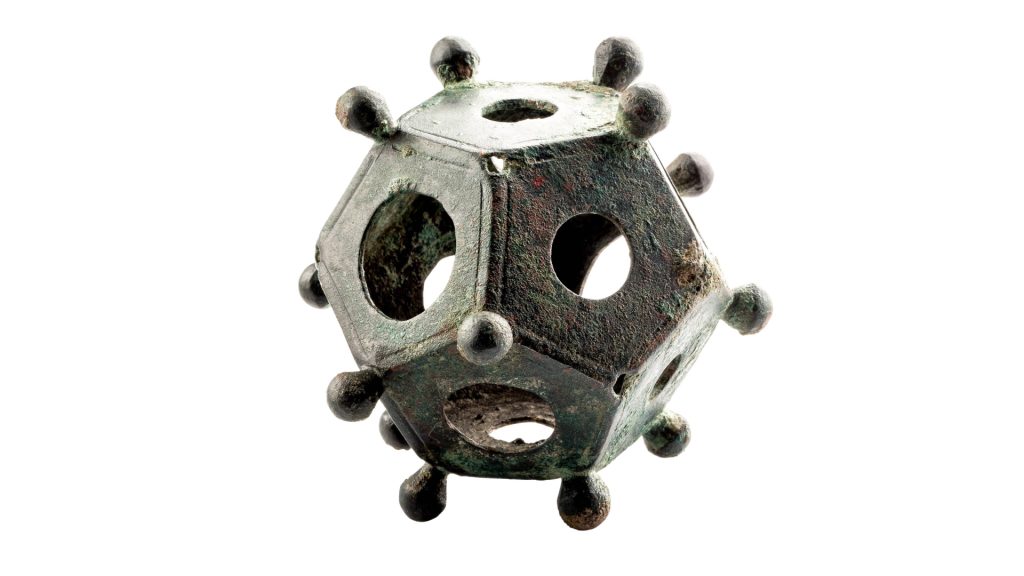
There are no drawings or artwork from the Roman era that include depictions of dodecahedrons. Likewise, there are no written records in ancient texts to tell of their existence and purpose. Scholars are baffled … but they have some theories.
Were Dodecahedrons a Toy?
At first glance, dodecahedrons look like balls or, perhaps, that blue and red plastic toy you had as a child that helped you learn your shapes by inserting different pieces into the appropriate holes. But all the holes in the dodecahedrons are round so this doesn’t seem likely.

The dodecahedrons have flat faces, so the objects don’t roll like balls. Besides, the dodecahedrons that have been found don’t show signs of wear and tear like we would expect if a child has played with it.
Were Dodecahedrons a Tool for Measurement?
One prevailing theory is that dodecahedrons were some sort of measuring devices. Perhaps, some scholars posit, the different sized holes were used to measure something or to standardize the sizes of things … coins, for instance.
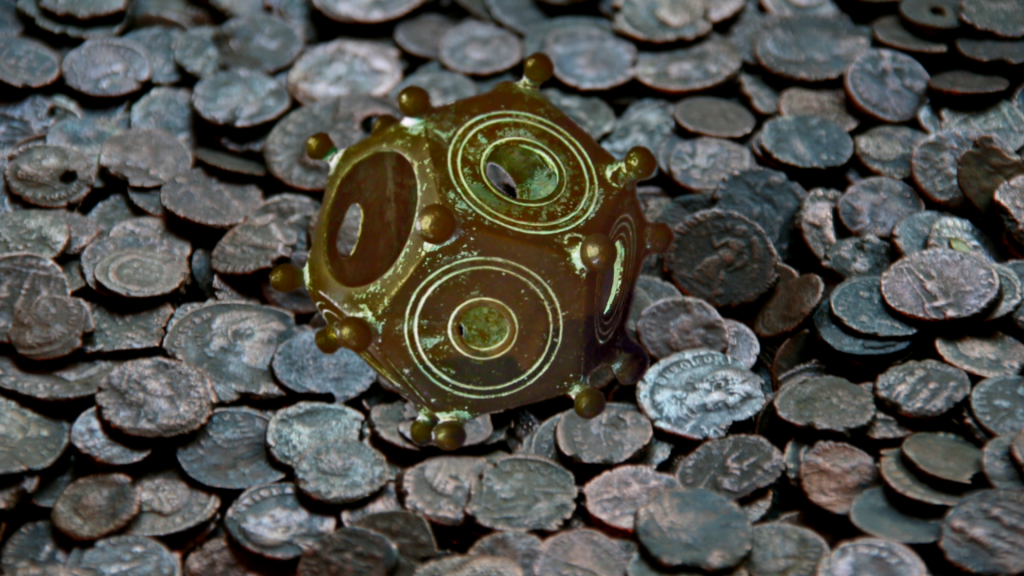
When we look at all the dodecahedrons that have been found, however, this theory doesn’t seem to hold water. None of the objects are the same size and none of the holes are uniform. In addition, there are no lines or tick-marks like we would expect to see on measuring tools.
Were Dodecahedrons Used for Knitting?
Another popular theory is that dodecahedrons were used to hold yarn for knitting, in the same manner as today’s knitting bowls. Keeping yarn together in an enclosed cage would prevent it from tangling, but how would a knitter get the yarn into the dodecahedron?

Dodecahedrons are solid shapes. They do not have little doors or openings that would allow a user to place a ball of yarn inside. And, remember, some of the dodecahedrons that have been found are rather small … about one and a half inches. That wouldn’t hold a lot of yarn.
Were Dodecahedrons Weapons?
There has been some speculation that dodecahedrons were weapons of some sort. Could they have been attached to chains and swung like maces? This doesn’t appear to be the case. The objects do not have loops or hooks to indicate that they were fastened to something. And they are not dented and mangled as we would expect if they were weapons.
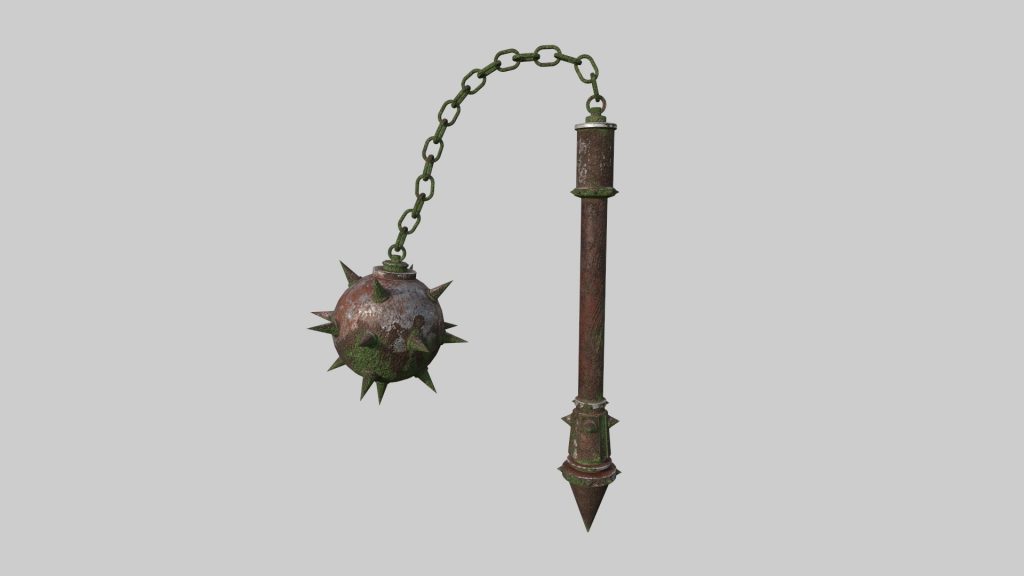
Maybe dodecahedrons were used as an incendiary weapon. One could stuff it with flammable material and throw it at the enemy. But once again, the objects that have been found do not show evidence that they were used in this manner.
Were Dodecahedrons Used for Decorative Purposes?
Maybe the twelve-sided dodecahedrons were simply decorative objects. Maybe they sat on a table or bookshelf like a knickknack. This would explain why they are all in good condition.
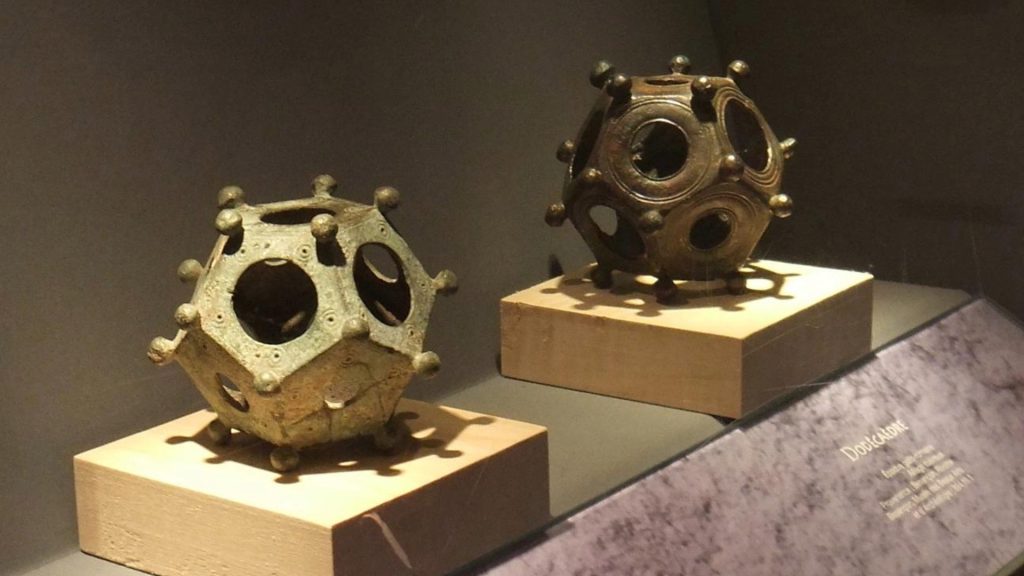
If dodecahedrons were a decorative item, it seems odd that there are no depictions of them in artwork or mentions of them in books. Other artistic objects are mentioned. So, maybe this was not the purpose of dodecahedrons.
Were Dodecahedrons Objects of Worship?
Some of the dodecahedrons that have been discovered were found in Roman graves. Could it be that these objects had some religious purpose or spiritual value? Again, we have no textual evidence to support this. But there may be a reason for that.

As scholars have pointed out, Roman law banned the practice of magic and outlawed magical items. Maybe dodecahedrons were venerated as a mystical object. This would explain why some Romans wanted to be buried with a dodecahedron. It would also explain why there are no records supporting this.
A Lot of Work Went into Making Dodecahedrons
According to Parker, “A huge amount of time, energy and skill was taken to create our dodecahedron, so it was not used for mundane purposes.” He added, “They are not of a standard size, so they are not measuring devices. They don’t show signs of wear, so they are not tools.”

rg “Roman society was full of superstitions,” he said. As Roman society embraced Christianity, it made practicing other types of worship illegal. People would have kept spiritual objects hidden for their own use.
“More Investigation Is Required“
Before more theories are put forward about the purpose of Roman dodecahedrons, further research is needed. Parker agrees, “More investigation is required.” While the newly found dodecahedron is safely housed at a nearby museum, Parker and his group of volunteer archaeologists are making plans.
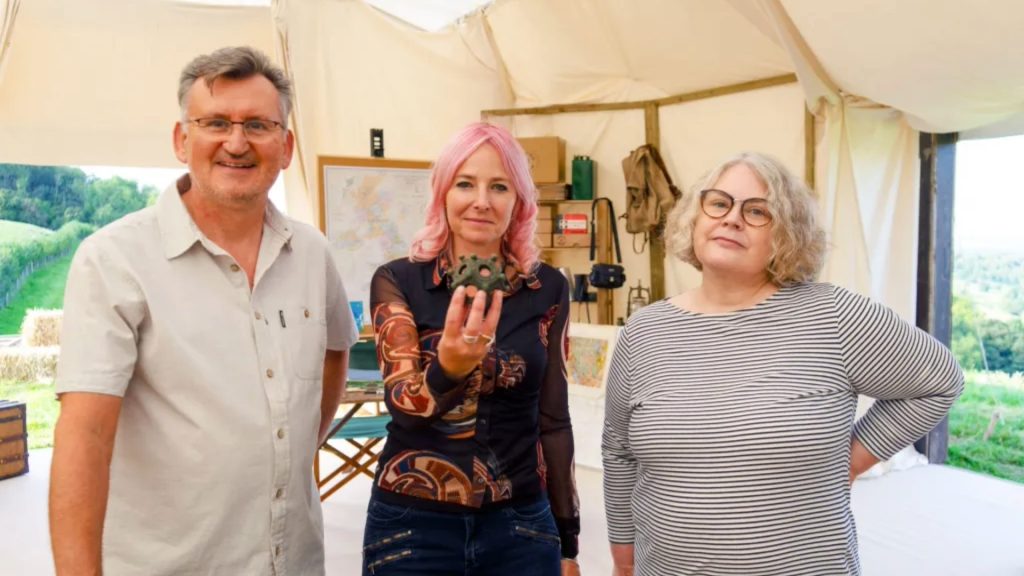
As Parker explained, the group will return to the same location where the dodecahedron was found in the summer and continue their excavation of the site. The team is hopeful that they will uncover clues to help them solve the puzzle of what these mysterious twelve-sided objects were used for.

